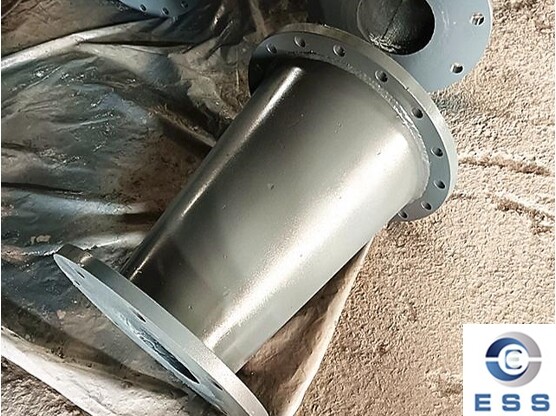The corrosion allowance of pipe flange refers to the difference between the thickness of the metal material on the
sealing surface of the pipe flange and the thickness of the sealing surface of
the standard pipe flange. When in use, since the chemical and physical
properties of the medium will affect the service life of the pipe flange, it is
necessary to consider the corrosion allowance of the pipe flange to ensure the
safe and reliable operation of the pipe flange.

Factors affecting flange corrosion
allowance:
1. Pressure
Pressure is an important factor affecting
the corrosion of pipe flanges. Under high pressure, the pressure on the pipe
flange will accelerate the corrosion rate, so it is necessary to consider the
strength and pressure resistance of the pipe flange, and appropriately increase
the corrosion allowance of the pipe flange.
2. Temperature
Temperature is also one of the factors
affecting the corrosion of pipe flanges. Under high temperature, the metal
material on the pipe flange is easy to soften and deform, so it is necessary to
consider the influence of the material and temperature of the pipe flange on
its corrosion rate, and adjust the corrosion allowance of the pipe flange
accordingly.
3. Medium
Different media also have different effects
on the corrosion rate of pipe flanges. The corrosion rate of acidic and
alkaline media is faster, while the corrosion rate of neutral media is slower.
Therefore, when selecting the material of the pipe flange, it is necessary to
comprehensively consider the properties of the medium and increase the
corrosion allowance of the pipe flange according to the actual situation.
How to ensure the corrosion allowance of
the pipe flange:
1. Choose the right material
In order to ensure the corrosion allowance
of the flange, you first need to choose the right material. When selecting
materials, you should decide according to the use environment and conditions of
the pipeline. And you need to consider factors such as the strength, corrosion
resistance, and wear resistance of the material.
2. Correctly install the flange connection
When installing the flange connection, you
need to pay attention to the following points: The bolts of the flange should
be tightened evenly to ensure that the stress distribution of all bolts is
uniform and reduce the stress caused by thermal expansion and contraction.
Avoid using the clamping nut too tight to compress the flange sealing surface
to produce excessive stress, resulting in leakage and deformation. To avoid
flange corrosion, protective materials such as PVC, fiberglass and other
materials should be used for protection.
3. Regularly check the corrosion of the
pipeline
In order to better ensure the corrosion
allowance of the pipe flange, it is necessary to regularly check the corrosion
of the pipeline. If oxidation corrosion is found in the pipeline, timely
maintenance and repair should be carried out. At the same time, the
anti-corrosion measures of the pipeline should be strengthened to reduce the
occurrence of oxidation corrosion.
Conclusion
The corrosion allowance of pipe flanges
plays a very important role in the safe use of pipe flanges. When using it, you need to consider many factors, have a deep understanding of the flange maintenance method with the flange supplier, and make corresponding adjustments according to the actual situation. Through reasonable maintenance measures, the long-term safe and reliable operation of the pipeline flange can be guaranteed.













 Eastern Steel Manufacturing Co.,Ltd not only improve product production and sales services, but also provide additional value-added services. As long as you need, we can complete your specific needs together.
Eastern Steel Manufacturing Co.,Ltd not only improve product production and sales services, but also provide additional value-added services. As long as you need, we can complete your specific needs together.










